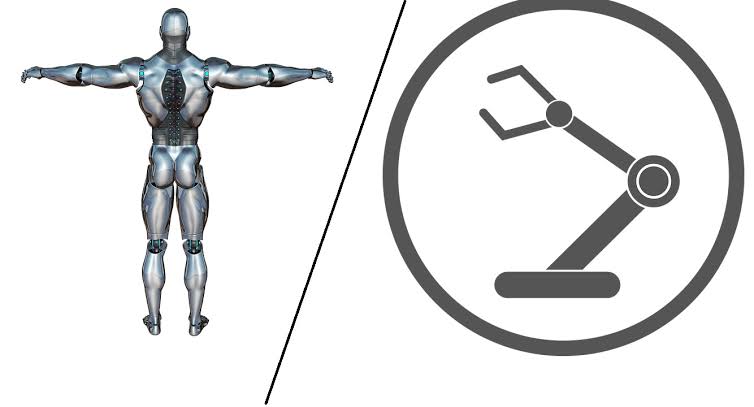- Get link
- X
- Other Apps
- Get link
- X
- Other Apps
Introduction:
In the realm of technology, the terms "machine" and "robot" are often used interchangeably, blurring the lines between their definitions and functionalities. However, a closer examination reveals distinct characteristics that set them apart. In this blog, we explore the differences between machines and robots, shedding light on their unique attributes and shedding light on their roles in various fields.
Defining Machines:
Machines are mechanical or electrical devices designed to perform specific tasks or functions. They are typically engineered to carry out repetitive or specialized operations efficiently and accurately. Machines can range from simple mechanisms, such as levers and pulleys, to complex systems like engines, computers, and industrial equipment.
Key Features of Machines:
1. Task-specific: Machines are designed with a singular purpose in mind, focusing on performing a specific task or function efficiently.
2. Lack Autonomy: Machines lack the ability to operate independently or make decisions. They require external control and supervision to perform their designated functions.
3. Limited Interaction: Machines generally have minimal or no interaction with their surroundings, as they are typically designed to operate within predefined parameters and controlled environments.
Understanding Robots:
Robots, on the other hand, are more complex and versatile entities that combine hardware, software, and AI capabilities. They are designed to interact with their environment, perform tasks autonomously or semi-autonomously, and adapt to changing situations. Unlike machines, robots often exhibit some level of intelligence and are capable of sensing, processing information, and making decisions.
Key Features of Robots:
1. Automation and Autonomy: Robots can operate independently or semi-independently, relying on pre-programmed instructions or AI algorithms to execute tasks without constant human intervention.
2. Interaction and Adaptability: Robots are equipped with sensors, actuators, and advanced algorithms that enable them to interact with their environment, perceive and process information, and adapt their actions accordingly.
3. Versatility: Robots are designed to handle a wide range of tasks, from industrial automation and assembly to complex human-like interactions, exploration, and assistance in various fields.
The Blurred Line:
While there is a clear distinction between machines and robots in theory, the line between them can become blurred in practice. Advancements in technology have led to the development of sophisticated machines that incorporate robotic elements, such as sensors, AI algorithms, and limited autonomy. This fusion has resulted in the emergence of collaborative robots, known as cobots, which work alongside humans in shared workspaces, combining the strengths of both machines and robots.
Applications and Impact:
Machines find extensive use in industries such as manufacturing, transportation, agriculture, and information technology, where precision, efficiency, and reliability are paramount. They excel at repetitive tasks, enhancing productivity and streamlining operations.
Robots, with their versatility and adaptability, have a broader range of applications. They are utilized in industries such as healthcare, exploration, logistics, entertainment, and even domestic settings. Robots can assist in surgeries, explore hazardous environments, handle complex assembly tasks, provide companionship, and much more.
Conclusion:
In summary, machines and robots differ in their capabilities, autonomy, and level of interaction with the environment. Machines excel at specialized and repetitive tasks, whereas robots exhibit greater autonomy, adaptability, and versatility. While the line between machines and robots can be blurred due to advancements in technology, understanding their distinctions helps us appreciate the unique roles they play in various industries and their impact on our daily lives.

Comments
Post a Comment